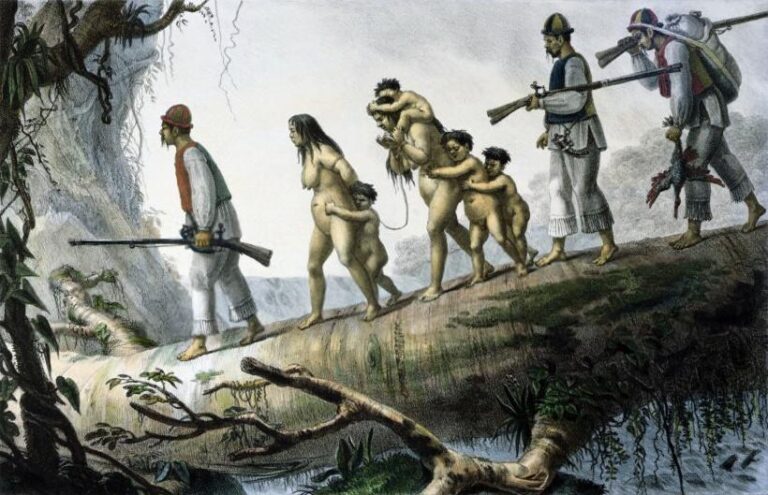New archaeological findings and historical analyses are shedding light on a dark and overlooked chapter of North American history: the exploitation of Indigenous child slaves in New France. Recent studies have uncovered evidence revealing that Indigenous children were systematically enslaved and subjected to harsh conditions, challenging long-held perceptions of colonial relations in the region. These revelations not only deepen our understanding of the colonial era but also prompt a reevaluation of the legacy of slavery beyond the Atlantic slave trade. This article explores the groundbreaking research bringing the forgotten stories of these Indigenous child slaves to the forefront.
Forgotten Indigenous Child Slaves in New France Brought to Light by Recent Archaeological Findings
Recent excavations at several sites in present-day Quebec have uncovered harrowing evidence of Indigenous children subjected to enslavement during the era of New France. These findings challenge the long-held narratives that have largely overlooked the complex and brutal aspects of colonial interactions with Indigenous communities. Artifacts such as shackles, personal belongings of young captives, and skeletal remains bearing clear marks of restraint reveal a disturbing reality: the systematic capture and forced servitude of children, often separated from their families and cultural roots.
Experts now emphasize the significance of these discoveries in reframing colonial history and acknowledge the enduring trauma experienced by Indigenous descendants. The archaeological team, supported by Indigenous leaders, highlights key themes emerging from the research:
- Child captivity as a tool for control: Used not only for labor but to disrupt tribal bonds.
- Evidence of cultural erasure: Attempts to strip children of language, identity, and heritage.
- Material culture insights: Objects found provide rare glimpses into the daily lives and resistance of young captives.
| Artifact Type | Description | Significance |
|---|---|---|
| Iron Shackles | Small-sized restraints adaptable for children | Proof of enforced captivity and labor |
| Clay Figurines | Depictions of Indigenous symbols worn by captives | Indicators of cultural identity amid oppression |
| Personal Charms | Carved from bone and wood, belonging to children | Signs of resilience and spiritual protection |
Harsh Realities and Cultural Impacts Uncovered in New Research on Colonial Enslavement
Recent archaeological investigations have unearthed stark evidence illustrating how Indigenous children in New France were subjected to forms of enslavement that brutalized not only their bodies but also their cultural identities. These children were often forcibly removed from their communities, stripped of their languages, and coerced into servitude under colonial households. The psychological scars left by such practices reverberated across generations, fraying the fabric of Indigenous societies. New research emphasizes the widespread nature of this enslavement, challenging prior historical narratives that have minimized the extent of Indigenous child labor and its role in colonial systems.
Key cultural impacts identified include:
- Disruption of traditional kinship and social structures
- Erosion of Indigenous languages through imposed colonial education
- Loss of ancestral knowledge passed orally within families
- Forced assimilation resulting in identity fragmentation
| Aspect | Pre-Colonial Status | Colonial Impact |
|---|---|---|
| Family Unit | Strong, interconnected clans | Fragmented by child removal |
| Language | Flourishing native tongues | Suppressed through colonial schooling |
| Cultural Practices | Rich ceremonial traditions | Diminished or lost |
| Child Status | Respected community members | Forced laborers and servants |
Calls for Recognition and Preservation of Indigenous Histories in Light of New Evidence
Recent archaeological discoveries have sparked urgent demands from Indigenous leaders and historians for a thorough acknowledgment of the overlooked narratives surrounding Indigenous child slaves in New France. New evidence unearthed from excavation sites reveals personal artifacts and burial patterns that challenge previously accepted historical accounts. This revelation compels a reassessment of colonial records, many of which have long marginalized or ignored the experiences of Indigenous children subjected to enslavement and cultural erasure.
Advocates emphasize several critical actions:
- Official recognition of Indigenous child slavery as a significant part of North American colonial history
- Implementation of protection measures for unearthed sites reflecting Indigenous heritage
- Incorporation of Indigenous oral histories alongside archaeological findings in educational curricula
- Collaborative preservation projects led by Indigenous communities to contextualize artifacts respectfully
| Action Item | Purpose | Stakeholders |
|---|---|---|
| Recognition in Archives | Validate Indigenous narratives | Historians, Archivists, Indigenous Groups |
| Site Preservation | Protect cultural heritage | Archaeologists, Local Governments |
| Education Reform | Raise public awareness | Educators, Policy Makers |
| Community-led Research | Ensure respectful storytelling | Indigenous Leaders, Researchers |
In Retrospect
As new research continues to shed light on the harrowing experiences of Indigenous child slaves in New France, these studies challenge long-standing historical narratives and call for a more inclusive understanding of the past. By bringing these forgotten stories to the forefront, scholars hope to acknowledge the resilience of Indigenous communities and inspire ongoing dialogue about colonial legacies. The revelations mark a significant step in uncovering the full scope of history, ensuring that these silenced voices are finally heard.




